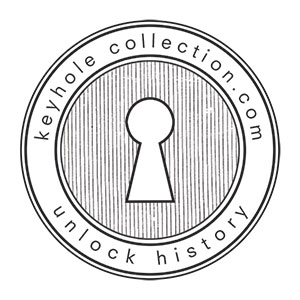Archive | Cards
Starburst. Move in a circular fashion and you will see a figure of 8 motion.
Ice Crystals. Happy Christmas
A small part of a larger work found in this marvellous and heavily illustrated encyclopaedia. The Brockhaus and Efron Encyclopedic Dictionary (Russian: Энциклопедический словарь Брокгауза и Ефрона, abbr. ЭСБЕ; 35 volumes, small; 86 volumes, large) is a comprehensive multi-volume encyclopedia in Russian. It contains 121,240 articles, 7,800 images, and 235 maps. It was published in […]
Tandem. On your Engagement
A small part of a larger work found in this marvellous and heavily illustrated encyclopaedia. The Brockhaus and Efron Encyclopedic Dictionary (Russian: Энциклопедический словарь Брокгауза и Ефрона, abbr. ЭСБЕ; 35 volumes, small; 86 volumes, large) is a comprehensive multi-volume encyclopedia in Russian. It contains 121,240 articles, 7,800 images, and 235 maps. It was published in […]
Pram. Baby Boy Baby Girl
Shells
A small part of a larger work found in this marvellous and heavily illustrated encyclopaedia. The Brockhaus and Efron Encyclopedic Dictionary (Russian: Энциклопедический словарь Брокгауза и Ефрона, abbr. ЭСБЕ; 35 volumes, small; 86 volumes, large) is a comprehensive multi-volume encyclopedia in Russian. It contains 121,240 articles, 7,800 images, and 235 maps. It was published in […]
White Stork. Congratulations
This card is unlike all the others. It was drawn by me from an item held in The Mitchell library. It was my first letterpress plate. So I have included it so that I can tell the story of how it all began. Over the year The Mitchell library has been a great source […]
Diver. Good Luck
A small part of a larger work found in this marvellous and heavily illustrated encyclopaedia. The Brockhaus and Efron Encyclopedic Dictionary (Russian: Энциклопедический словарь Брокгауза и Ефрона, abbr. ЭСБЕ; 35 volumes, small; 86 volumes, large) is a comprehensive multi-volume encyclopedia in Russian. It contains 121,240 articles, 7,800 images, and 235 maps. It was published in […]
Magpie, corvus pica
Orthoscopic or correct vision spectacles
The true ordering of bees
Different Tulips
Cabbages, as lovely as roses
Knots
The book of knots, being a complete treatise on the art of cordage. Illustrated by 172 diagrams showing the manner of making every knot and splice.
Bell Rock Lighthouse in a storm
This book is found in The Stevenson Collection. Bell Rock lies off the coast of Angus Scotland and once apon a time it claimed the lives of many men. Between 1807 and 1810 it became the scene of a feat of engineering which has since been described as on of the seven wonders of the […]
Bee anatomy
In 1630 Francesco Stelluti published an edition of an Italian translation of the poems of the Roman satirist Persius. For this edition Matthaeus Greuter engraved two plates, which are the first illustrations prepared with a compound microscope to be included in a printed book. http://digital.nls.uk/moir/illustrations.html
Surgical Instruments
Andreas Vesalius (31 December 1514 – 15 October 1564) was an anatomist, physician, and author of one of the most influential books on human anatomy, De humani corporis fabrica (On the Fabric of the Human Body). Perhaps the most famous of these anatomical studies are the ‘muscle men’ which feature men standing in dynamic poses […]
Human Heart. Be my Valentine
In 1698 William Cowper published his first edition of The anatomy of the Humane Bodies. It gained great fame but was surrounded by controversy and some have called the greatest ever act of plagiarism in medical publishing. Goddard Bidloo published his Anatomia Humani Corporis in 1685 and it contained 105 beautiful plates by Gerard de […]
Skeleton contemplating a skull
Andreas Vesalius (31 December 1514 – 15 October 1564) was an anatomist, physician, and author of one of the most influential books on human anatomy, De humani corporis fabrica (On the Fabric of the Human Body). Perhaps the most famous of these anatomical studies are the ‘muscle men’ which feature men standing in dynamic poses […]
Phrenology heads
Phrenology taught that particular human characteristics and qualities were connected to different parts of the skull. The Skull was split into 33 named Phenological ‘organs’ which all came under the subcategories of 1- propensities, eg. secretiveness, constructiveness, adhesiveness(?) , 2- sentiments, eg. self esteem, benevolence, ideality & wonder 3- intellect, eg. Order, weight, time, form […]

